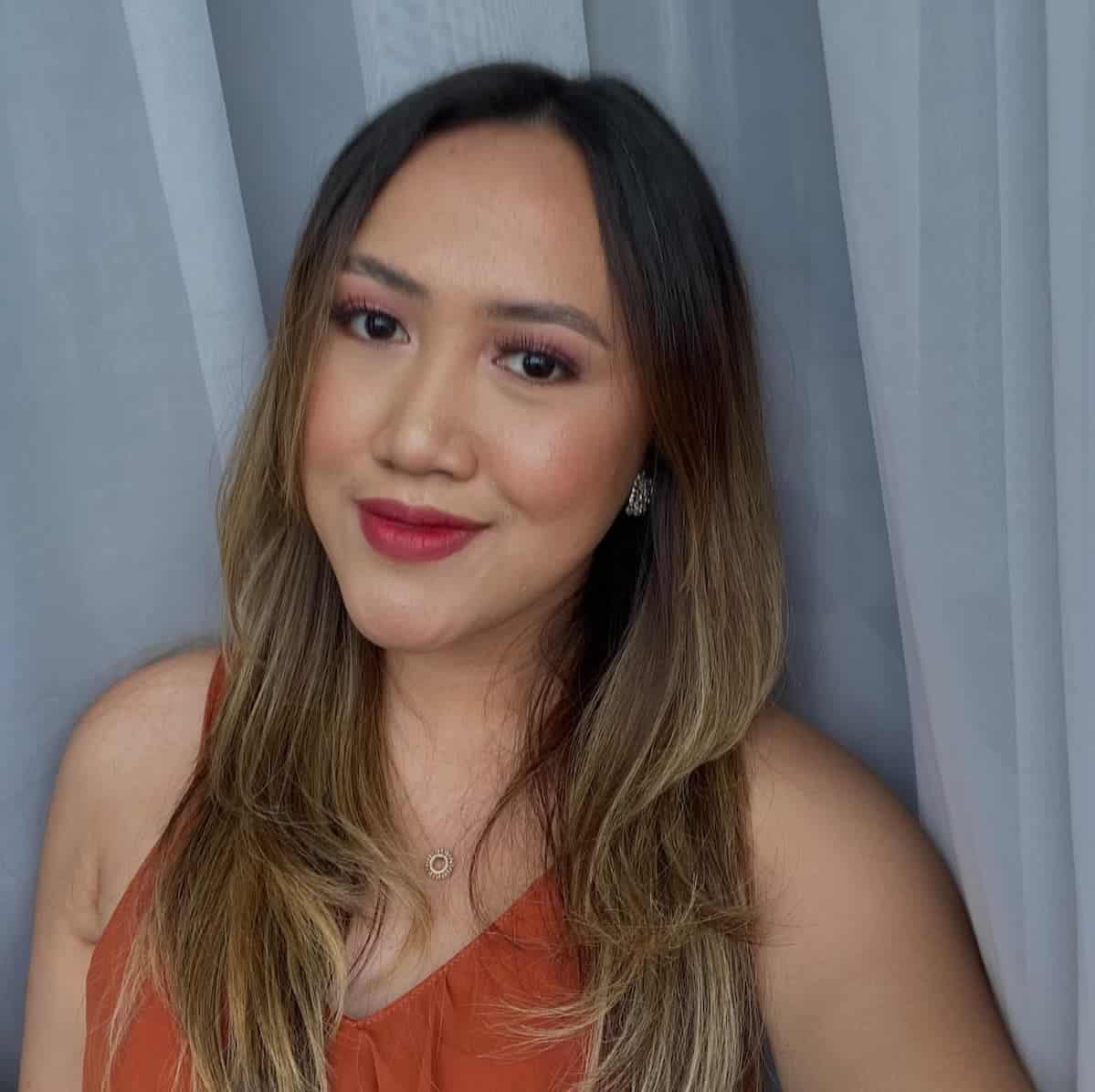How To Mix Hair Colors: A Comprehensive Guide
This post may contain affiliate links, which means I may receive a small commission, at no cost to you, if you make a purchase.
Have you ever looked in the mirror and thought about reinventing your look with a new hair color?
Learning how to mix hair colors is the key to achieving the hair color of your dreams!
The exciting world of hair color mixing not only allows the blending of different dye hues but also opens up the possibility of creating a unique shade that mirrors your personality and self-expression.
Whether you’re aiming for a subtle change with soft blonde or brown tones or a bold transformation with vibrant rainbow colors, any color is achievable as long as you know how to mix hair dye colors!
In this guide, we will unravel the secrets of color mixing, providing you with the knowledge and confidence to experiment with your hair color.
So are you ready to embark on this colorful journey? Read on to learn more!
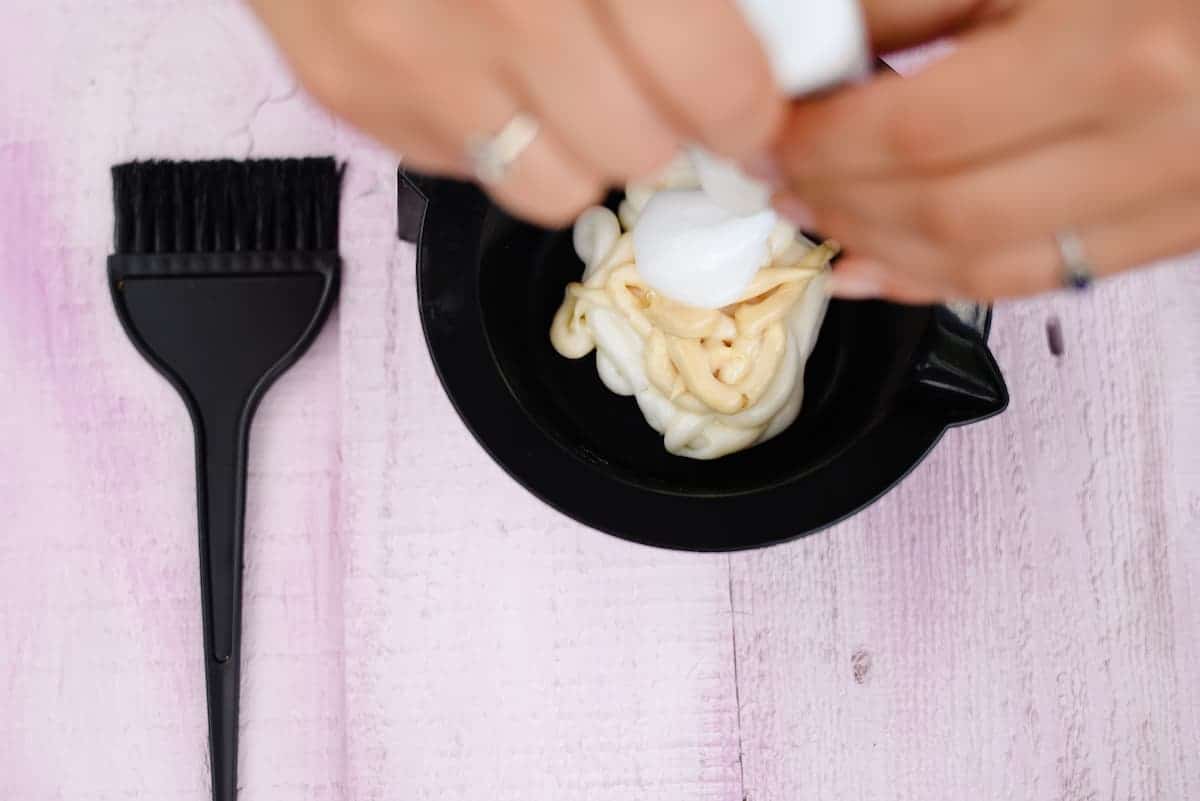
Table of Contents
Can Hair Colors Be Mixed?
Yes, mixing two hair dye colors (or more!) can certainly be done!
Hair dyes contain colorants that allow them to change the color of the hair, so when you mix hair dyes, these colorants can combine to create entirely new shades.
But remember that hair color mixing can be tricky, especially for beginners. There are many important considerations to make and guidelines to remember to achieve your desired results.
The most crucial question you need to ask first is, “Can you mix hair color brands?”
Generally, it’s recommended that you use hair colors from the same brand. It’s also vital to use the same type of hair dye.
Using the same hair color type and the same brand keeps you safe from potential chemical reactions, which can occur if the hair colors mixed are of different types or made by different brands.
Why? This is because hair color manufacturing companies have varying formulas, intensities, instructions, color-to-developer ratios, and more.
Additionally, mixing different hair dye types can lead to undesirable results.
Take a look at the combinations below so that you’re aware of which hair dye type mixtures are safe and which ones should be avoided:
Semi-Permanent + Permanent
Semi-permanent and permanent hair dyes can’t be mixed due to formula incompatibility. Doing so can provide uneven results.
This is for three reasons. Firstly, semi-permanent hair dye washes away faster than permanent hair dye.
Secondly, semi-permanent hair dyes are not meant to be mixed with developers, while permanent hair dyes require them. This is why semi-permanent hair dyes and permanent hair dyes work differently.
Developers are special liquids that open up the hair cuticles and activate permanent hair dyes, allowing them to penetrate the hair cortex and alter the chemical structure of the hair to change its color.
By contrast, semi-permanent dyes are designed to only coat the hair shaft with color.
As such, mixing the two types of hair dye can disrupt the way they work and even cause unpredictable chemical reactions that could damage your hair.
Lastly, the chemicals in a developer can degrade the pigments in a semi-permanent dye, the same way it does for your hair’s pigments.
So when you mix a semi-permanent and a permanent dye, they will cancel each other out or create patchy results.
Demi-Permanent + Permanent
Demi-permanent and permanent dyes may work well together (although it’s still best to stick to using two dyes of the same type), but make sure to use the same brand.
The former has an ammonia-free formula but still requires the use of a developer, just as permanent dye requires a developer.
In this mixture, demi-permanent dye dilutes the ammonia in the permanent hair color formula.
So when permanent hair colors are mixed with demi-permanent ones, the result allows for a less harsh hair coloring process.
Semi-Permanent + Demi-Permanent
Semi- and demi-permanent hair dyes are incompatible. While they both last for around six to eight weeks, they still shouldn’t be mixed together.
This is because semi-permanent hair dyes do not require you to mix hair color with a developer, while demi-permanent ones need a low-volume developer.
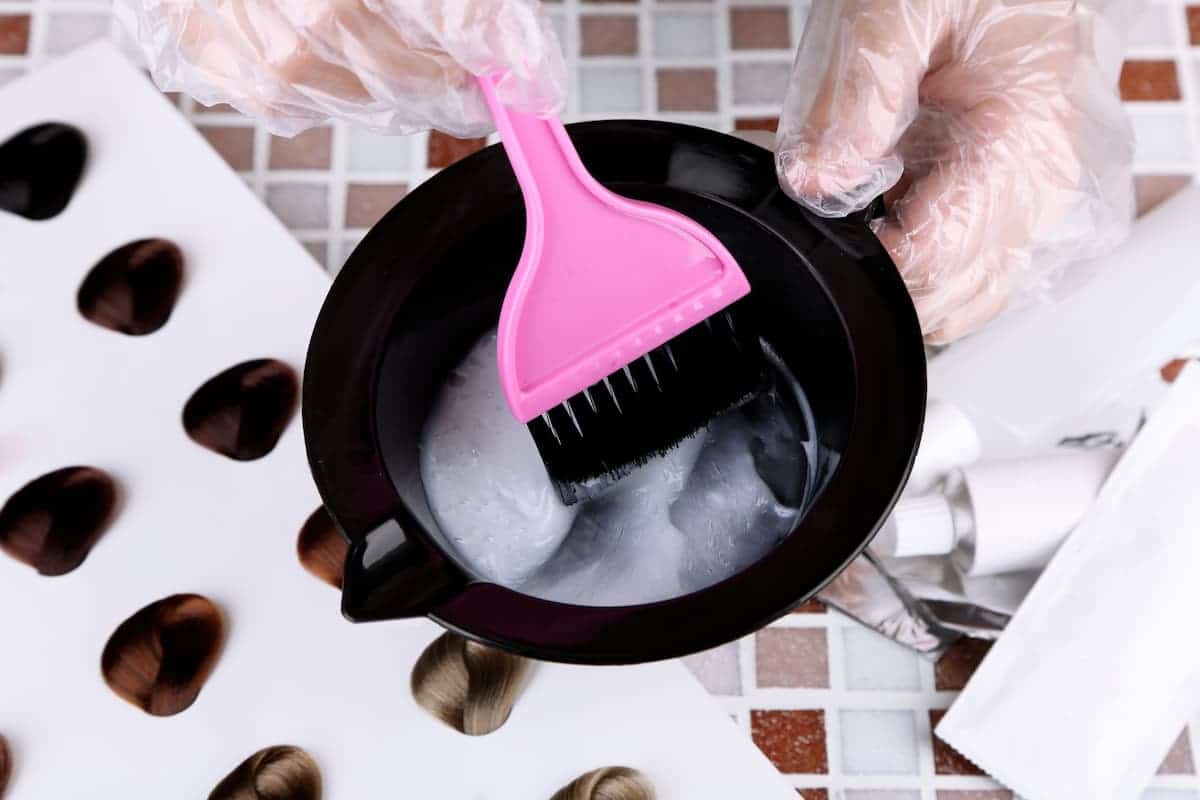
Rules of Hair Color Mixing
Aside from using hair colors of the same type and from the same brand, there are several other important rules to follow when it comes to learning how to mix hair colors like a professional.
If you want to ensure successful results, here are some guidelines to bear in mind:
Use the Correct Dye-to-Developer Ratio
Do you mix hair color with a developer? Yes!
As mentioned above, demi-permanent and permanent hair colors require the use of a developer.
If you’re mixing permanent or demi-permanent hair dyes, be sure to always use the correct dye-to-developer ratio for each hair color.
The general rule of thumb is to use one to two parts of developer for one part of hair color.
However, this will depend on the brand and colors you are using, as indicated in the manufacturer’s instructions.
Remember that using too much developer can dilute the color and make it too light, while using too little can make the color too intense or uneven.
So when mixing hair colors, always pay close attention to the manufacturer’s guidelines stating the proper mixing ratio of hair color and developer to ensure you can get the beautiful hue you desire.
Mix Hair Colors at the Same Color Level
Hair color levels refer to the darkness or lightness of hair colors, ranging from level 1 (darkest black) to level 10 (lightest blonde).
So mixing hair color at the same color level means combining different shades that have the same darkness or lightness.
For example, if your hair is medium brown (level 5), you should mix various shades of brown that are also at level 5.
The key benefit of this approach is achieving a natural and cohesive result.
When you blend the colors at the same level, it enhances your hair’s natural beauty and creates subtle variations without drastic changes.
However, you can mix hair colors with different levels if you want to achieve a hair color that’s between those two levels.
For example, if you want to achieve a level 8 hair color, mixing level 7 and level 9 hair colors can help you achieve it.
That said, mixing colors that are too far apart in terms of hair color levels can result in an unnatural and uneven appearance.
Make sure to avoid this, and stick to mixing hair colors that are similar or close to each other in level.
Avoid Mixing Warm and Cool Shades Together
Another rule you have to follow when mixing hair colors is not to mix warm and cool hues. This keeps the colors from canceling each other out or making the results appear undesirable.
For instance, mixing cool ash colors with warm colors like copper red or golden blonde can create a muddy color.
However, you can mix either a warm or cool hair color with a neutral color to dampen its intensity.
For example, mixing an ash hair color with a neutral color to achieve a softer and less harsh or striking ash hue that complements your skin tone and your style.
Below is a guide to help you distinguish between cool, warm, and neutral hair colors.
You can refer to this chart before mixing hair colors to ensure color compatibility.
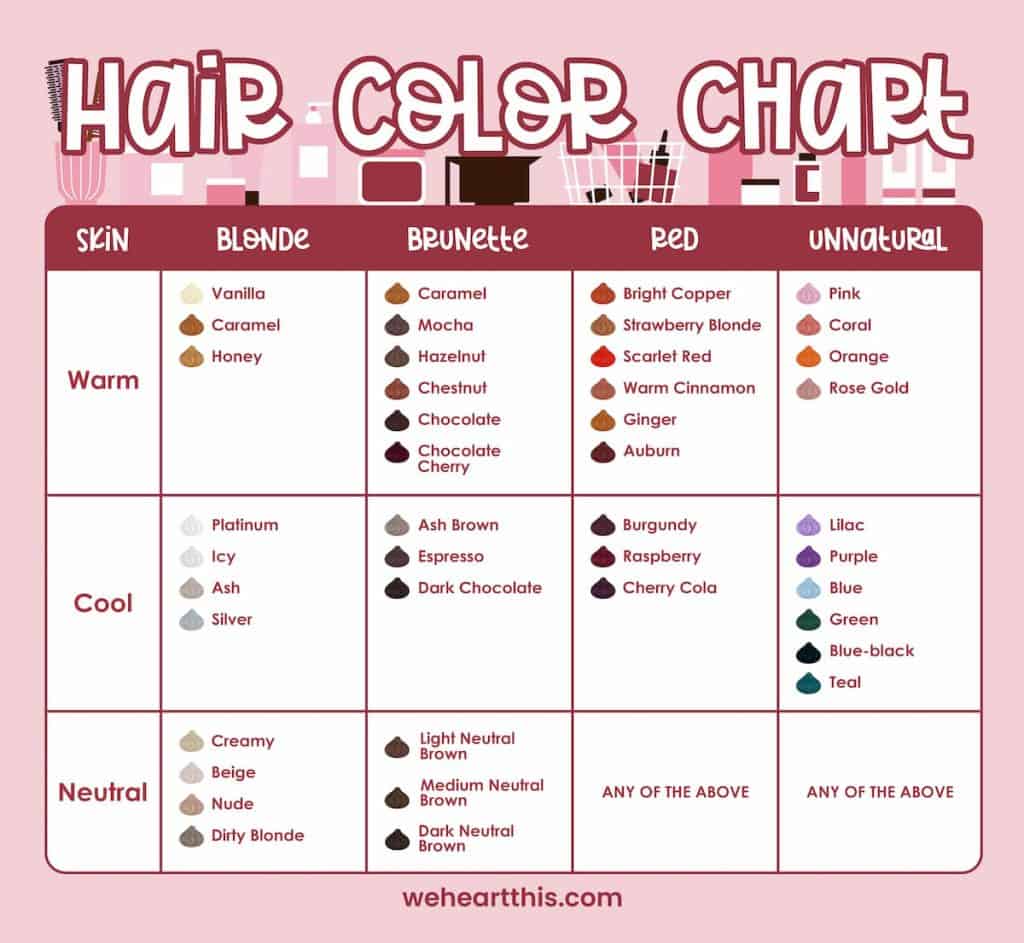
Avoid Overmixing Colors
When it comes to figuring out how to mix hair dye properly, there’s one guideline you should adhere to religiously: don’t overmix your colors.
This is crucial in achieving the desired result when blending different shades.
Overmixing can lead to unpredictable outcomes, and the final color may not turn out as intended.
To avoid overmixing, start by mixing a small amount of each hair color on a mixing palette or bowl.
Gradually blend them together using a color brush until you achieve a smooth and even consistency.
It’s essential to stop mixing as soon as you reach the desired color, as excessive mixing can lead to the colors becoming muddy or losing their individual vibrancy.
Use White Conditioner for Dilution
When we talk about dilution, we mean reducing the intensity or concentration of a hair dye to create a softer, lighter shade.
You can mix hair color with conditioner — semi-permanent hair color with white conditioner in particular — to dilute the color, especially when you want to lighten or “pastel-ify” it.
White conditioner acts as a neutral base that won’t add any color to the mixture, making it perfect for dilution purposes.
For beginners, mixing hair color with conditioner can be a game-changer in achieving the desired color without going too bold or intense right away.
Take note that this is only applicable to mixing semi-permanent hair color with conditioner.
It’s not advisable to mix demi-permanent and permanent hair dyes with conditioner.
These two products have an alkaline pH, while conditioner has an acidic pH.
So mixing them will create a chemical reaction that will prevent them from coloring the hair properly and create a patchy result.
Perform a Strand Test
A strand test is vital to hair color mixing, especially if you’re trying a new color or technique.
It involves taking a small section of your hair (usually from a hidden or less noticeable area), applying the mixed hair color to it, and observing the result.
Think of it as a “preview” of how the color will look on your hair before applying it all over.
To do a strand test, start by preparing a small amount of hair color mixture following the manufacturer’s instructions.
Then select a thin strand of hair and apply the color to it. Make sure to time how long the color is left on the strand, as the processing time can affect the final result.
After the recommended processing time, rinse off the hair color from the strand and dry it to see how the color looks.
Prepare Yourself for the Upkeep
Certain hair colors require more maintenance than others, particularly pastel or light colors, which demand great care and effort.
So if you mix hair colors to achieve a gorgeous customized pastel shade or any hue that’s lighter than your real hair color, make sure to wash your hair sparingly — once a week at most with cold water — to avoid quick fading.
Also, stock up on a pile of color-safe hair care products to maintain your hair’s new hue.
How To Choose What Hair Colors Go Together
Now for the part where you choose hair dye colors to be mixed, there are two shades or types of color you need to pick: your primary and secondary colors.
The following sections will discuss further the primary and secondary colors and what role they play in the resulting color:
Choose Your Primary Color
Your primary hair color is the general shade you want your hair color to be. In a sense, it’s your base color.
For example, if you want strawberry blonde hair, your primary color is blonde.
Make sure to choose the hair dye that’s closest to your preferred hue. You can make the color lighter or darker as needed as you tweak its tint with your secondary color later.
Pick Your Secondary Color
If you need to add more dimension and character to your hair shade, that’s when you pick your secondary color. This is often lighter or darker, and it should contrast your primary color.
Some prefer the secondary color naturally bold or seamlessly subtle. It all boils down to personal preference.
Following the strawberry blonde hair example, mix your blonde hair color with a light coppery red hue.
How Much of Each Hair Color Should Be Used?
The exact amount of hair dyes largely depends on the hair color brand you’re using, the type of dye, and the natural hair type and density of your tresses.
That said, there’s no exact amount to follow if you want to mix hair color.
Still, mixing hair color entails knowing the right ratio, so you might have to experiment with this.
Here’s a basic guide to hair color ratios that you can follow and tweak when needed to achieve the hair color mixture you want:
If You Want an Even Ratio of Hair Colors
Mix 1/2 of your base and 1/2 of your secondary color if you aim for both colors to have a balanced effect on your hair.
If you want mushroom brown hair, for example, mix equal parts of ash brown and natural brown.
If You Want the Other Color To Be Dominant
Combine 3/4 of your base color with 1/4 of your secondary color if you want one shade to be more dominant.
The secondary color’s main purpose is to slightly dilute the color intensity of the base shade.
One great example is if you want a midnight blue hair color. Mix 3/4 of your electric blue hair dye and 1/4 of your black hair dye for the desired results.
How To Mix Hair Color Dyes at Home
At this point, you might be excited to do a DIY mixing of hair color dyes at home.
Learning how to mix hair colors on your own can be a rewarding experience, but it’s crucial to follow the process carefully to achieve the desired results.
Here are elaborate steps that are easy to follow, especially for newbies:
What You’ll Need
- Hair dyes of your choice
- Developer
- Mixing bowls
- Applicator brush
- Plastic gloves
- Old shirt or towel
- Hair clips
Step 1: Choose Your Colors
Select the hair dye colors you want to mix to achieve your desired shade. Ensure you have enough hair dye for the length and thickness of your hair.
Don’t forget to carefully read the instructions on each hair dye box. Different brands and colors may have specific mixing ratios and application methods.
Step 2: Combine Your Colors
In the mixing bowl, combine the hair dye colors according to your desired proportions.
You can use a 1:1 ratio for equal amounts or follow or combine 3/4 of your base color with 1/4 of your secondary color if you want one shade to be stronger.
Step 3: Add Developer
If you’re mixing permanent or demi-permanent hair dyes, use the appropriate mixing ratio of hair color and developer.
A good way to ensure you use the right amount of developer is to weigh your mixed hair colors with a digital scale, then pour your developer into a separate bowl until it matches the weight of your hair colors for an equal 1:1 dye-to-developer ratio.
Pour more developer to double the weight of your mixed colors if you’re aiming for a 2:1 ratio.
Step 4: Mix Thoroughly
Using the applicator brush, mix the hair dye and developer together thoroughly until you achieve a smooth, consistent mixture. Make sure there are no clumps or lumps.
Step 5: Wear Gloves and Protect Clothing
After having mixed hair dye colors, put on plastic gloves to protect your hands from staining and an old shirt or towel to protect your clothing from accidental spills.
Step 6: Do a Strand Test
If you’re unsure about the final color, consider doing a strand test on a small section of hair. This helps you see how the color will turn out on your hair before applying it to your entire head.
Step 7: Apply the Hair Dye
You’re now a step closer to your mixed hair color! The next thing you should do is to divide your hair into sections using hair clips if necessary.
Begin applying the hair dye mixture to your hair, starting from the roots and working your way down to the ends. Make sure every strand is covered evenly.
Step 8: Wait and Rinse
Follow the recommended processing time mentioned in the instructions.
Once the time is up, rinse your hair thoroughly with cool water until the water runs clear.
Step 9: Condition and Style
Use the conditioner provided in the hair dye box or a deep conditioner to moisturize and nourish your hair.
Dry your hair afterward, then style it as desired.
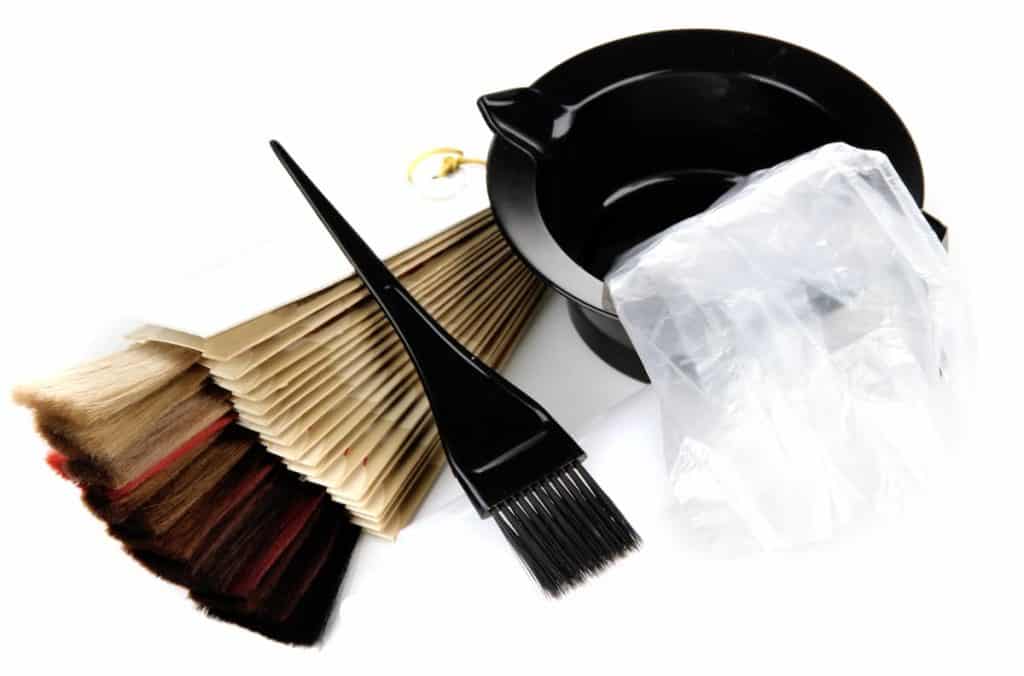
Popular Hair Color Mix Ideas
Want to get inspired with various mixed hair color ideas?
We’ve got a hair color mixture chart here with some of the most popular and chic hair color combinations that you can try out!
Bronde
- Hair dye colors — Brown and blonde
- Proper proportions — For a bronde look, mix brown and blonde hair dyes in a 2:1 ratio, meaning you should use twice as much brown as blonde. This blend creates a natural and sun-kissed effect.
Strawberry Blonde
- Hair dye colors — Red (lightest shade) and blonde
- Proper proportions — Achieve strawberry blonde by mixing a blonde hair color with a red one in a 1:1 ratio. This combination results in a warm, reddish-golden hue that complements various skin tones.
Lavender Ash
- Hair dye colors — Lavender and ash blonde
- Proper proportions — For a soft and muted lavender ash shade, mix lavender and ash blonde hair dyes in a 1:1 ratio. This creates a cool-toned, pastel color with hints of purple and grey.
Chocolate Cherry
- Hair dye colors — Dark brown and red
- Proper proportions — To achieve a rich chocolate cherry shade, mix dark brown and red hair dyes in a 3:1 ratio, with more brown than red. This results in a deep, reddish-brown color reminiscent of ripe cherries.
Auburn Spice
- Hair dye colors — Auburn and copper
- Proper proportions — Achieve a warm and spicy auburn hue by blending auburn and copper hair dyes in a 1:1 ratio. This combination adds depth and dimension to your hair.
Icy Blonde
- Hair dye colors — Platinum blonde and silver
- Proper proportions — Mix platinum blonde and silver hair dyes in a 1:1 ratio to give you a cool-toned, icy blonde look. If you’re seeking a striking color as an edgy girl, this mixed hair color idea is for you.
Frequently Asked Questions
Is it Safe To Mix Hair Dyes?
Mixing hair dyes can be safe if precautions are followed.
If you are a beginner at mixing hair dyes, you can perform a patch test to check for allergies and conduct a strand test to preview the color.
Consider the condition of your hair and stick to compatible dyes from the same brand.
Keep in mind that results may vary, and unpredictable color outcomes can occur.
We also recommend seeking professional advice if uncertain or if you’re making significant changes to your hair color.
By taking these precautions, you can achieve your desired hair color while minimizing potential risks to your hair and scalp.
Can I Mix Hair Color With Bleach?
No, you should not mix hair color with bleach. Hair color and bleach are two different products with distinct purposes and chemical compositions.
Mixing them together can lead to unpredictable and potentially damaging results.
Hair color is meant to deposit color into the hair, while bleach is used to lighten the hair by removing its natural color pigment.
If you want to lighten your hair before applying hair color, it’s best to use bleach separately and follow proper procedures.
However, it’s important to note that bleaching can be harsh on the hair, so it’s recommended to seek professional advice or use bleach products specifically designed for home use.
How Do I Mix Hair Colors To Cover Gray Hair?
The guidelines on how to mix hair colors to cover grays depend on the existing amount of gray hair.
If the amount of gray hair you have is less than 30%, you don’t need to mix hair colors to ensure proper coverage.
But if more than 30% of your hair is gray, you’ll have to mix your desired color with a dye with your natural hair color in a 1:1 ratio.
This lets you create a hair color mixture that has enough pigments to fully conceal your grays while allowing you to achieve the color you want.
Be Your Own Colorist!
Mastering the art of mixing hair colors is a creative journey that allows for personalized expression.
By learning the rules of how to mix permanent hair colors, demi-permanent colors, and semi-permanent colors, you can create bespoke shades that enhance your unique beauty.
Mixing hair colors can be an exciting adventure where you get to redefine your look and feel empowered.
With patience and practice, you can become your own colorist, transforming your hair into a stunning palette of your desired hues.
Want To Shop for High-Quality Hair Dyes?
Check these out:

